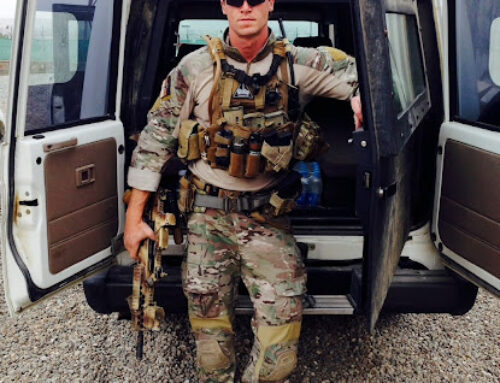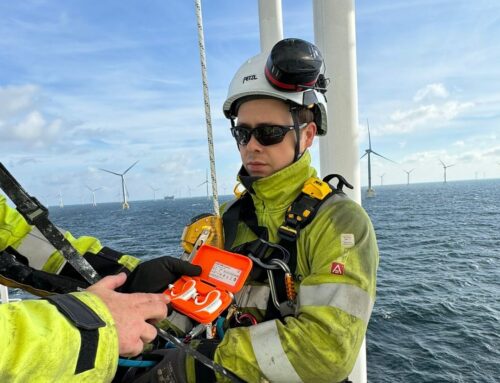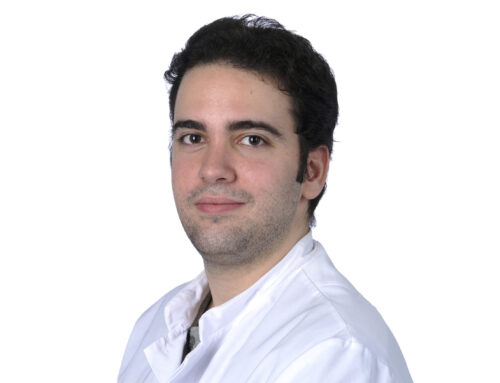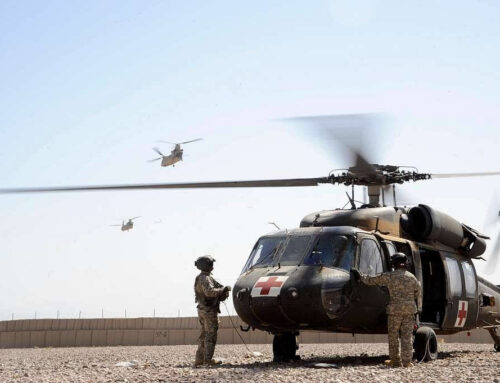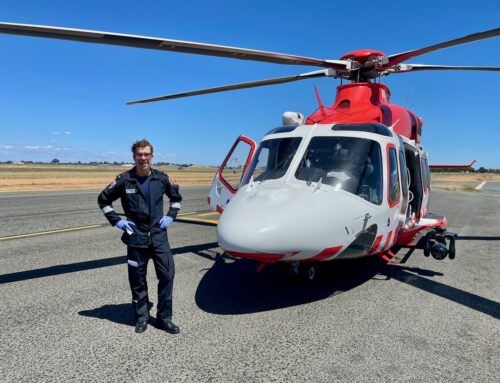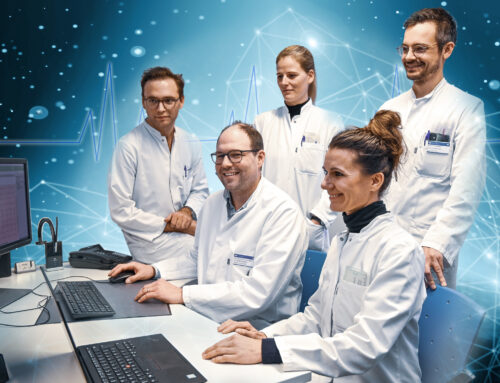Dr. Tobias Huber about his work as a mountain rescuer
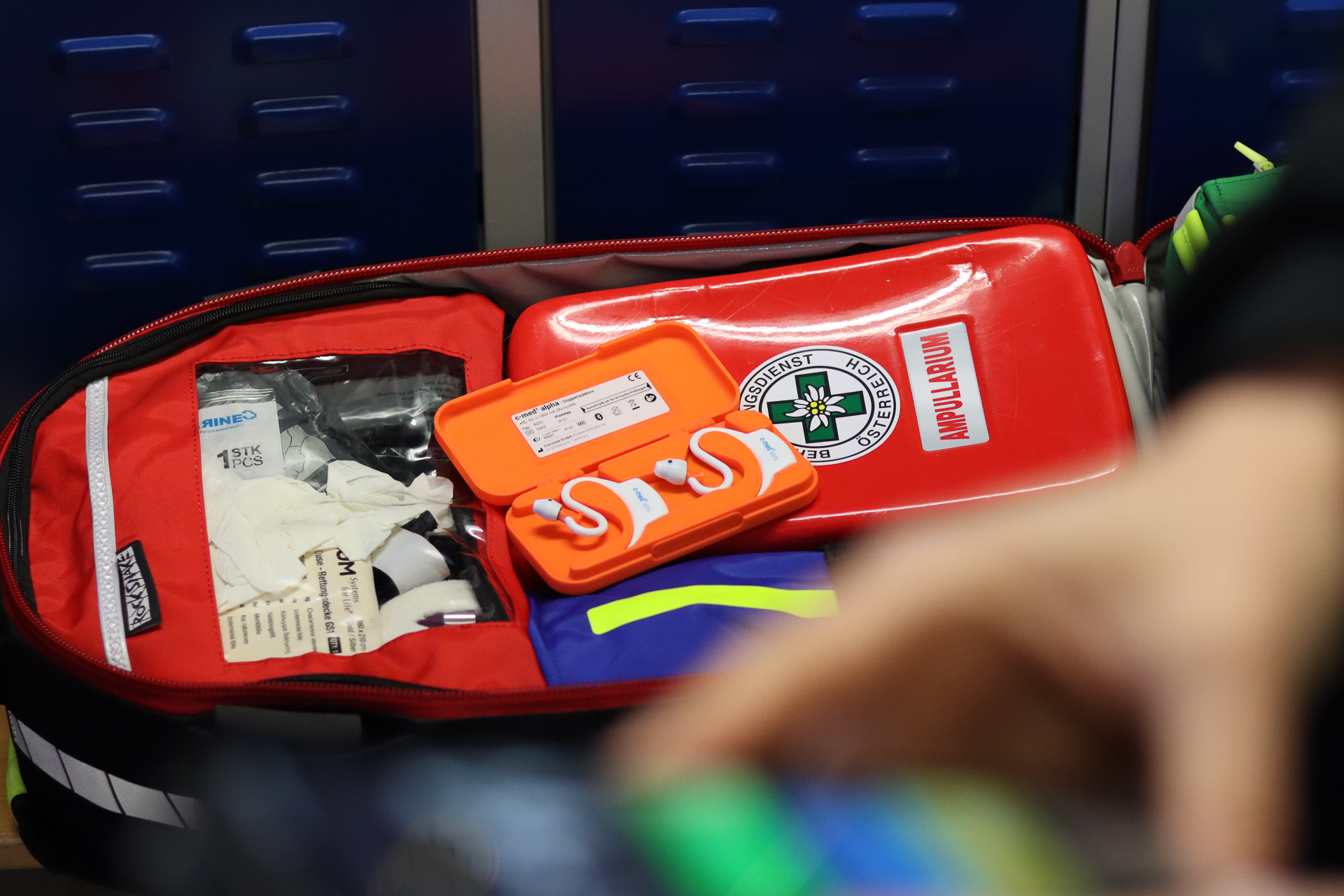
Nearly a year ago, cosinuss° equipped the Upper Austrian Mountain Rescue Service and the ski patrol of the Feuerkogel mountain railways with the small and ultralight patient monitoring system, setting new standards in the care of injured individuals.
We spoke with Dr. Tobias Huber, state medical director and deputy federal medical director, to learn about his experiences with the monitoring system so far. He also shared insights into the challenges of mountain rescue and discussed the benefits that new technologies can bring to the field.
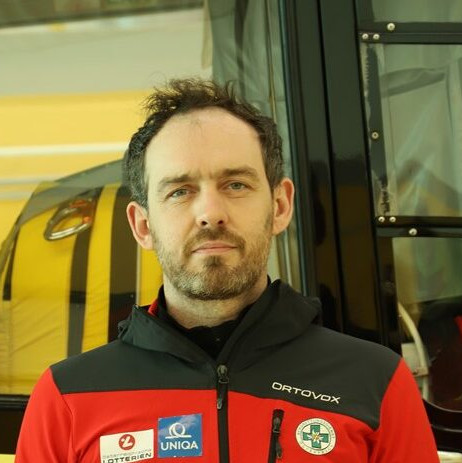
Fotonachweis: Schornsteiner, salzi.at
About the Interviewee:
Dr. Tobias Huber FRGS, is a specialist in anesthesiology and intensive care medicine, a general practitioner, emergency physician, air rescue doctor, senior emergency physician, and an expert in EUCP disaster management. He has been volunteering with the Upper Austrian Mountain Rescue Service for nearly 25 years.
How did you get involved in mountain rescue, and what motivates you in your work?
I have been part of the Upper Austrian Mountain Rescue Service for almost 25 years. My father was a mountain rescue doctor, so I grew up in this environment. The combination of medicine and mountaineering was extremely appealing to me, as it brings together many different areas of interest while also providing top-tier mountaineering training. In 2011, I took over the medical leadership in Upper Austria, and I am now also the deputy federal medical director of the Austrian Mountain Rescue Service. The work is intense, voluntary, and not always easy, but it complements my professional career perfectly. If my medical work is ever less exciting, there’s often a mountain rescue project that motivates me—and vice versa.
Can you describe a typical day or mission in the life of a mountain rescuer?
All team members are volunteers, which means they get “pulled out” of their normal lives whenever a mission comes in. They have regular jobs and meet up for rescue operations—unless they are assigned to organized ski patrol duty, which follows a regular work schedule.
The missions vary widely, from minor injuries to multi-day search operations. There are also severe accidents, such as falls or paragliders caught in trees. The interesting part is that there is no such thing as a standard mission. Every situation requires a unique approach—the team has to decide on-site how to proceed and which tactics to use.
Despite this variety, most missions have one thing in common: they require a lot of personnel. Often, eight to twelve people are involved, sometimes more. Rescuing or transporting someone from rough terrain is highly labor-intensive. It’s not just a matter of equipment—it’s primarily a manpower-intensive effort.
My role as a physician is to reach the patient as quickly as possible to provide medical care—sometimes even before the rest of the team arrives. But since the system is based on volunteers, there are times when not enough rescuers are available. In such cases, we have to improvise and work with fewer resources.
What are the biggest challenges you face during rescue missions in the Upper Austrian mountains?
The most challenging aspect of alpine missions is the differently structured—or sometimes entirely absent—rescue chain. Everything I bring with me is what I have at my disposal; anything I leave behind is usually out of reach. This creates significant resource limitations. Often, there is also a shortage of personnel.
In urban emergency medicine, resources are abundant—you can call for additional ambulances, request specialists, or rely on firefighters for support. In alpine operations, these options simply don’t exist. That’s why selecting the right equipment is crucial, and logistics play a central role.
Environmental conditions also present major challenges, whether in summer or winter. From blizzards to extreme heat, weather can be severe and make rescue operations even more difficult.
Additionally, the medical challenges are often less dramatic than TV shows suggest. Not every rescue is a high-stakes emergency—fortunately.
What are the most essential pieces of equipment for you?
I always carry the most critical emergency medical equipment—everything I need to provide medical care. Otherwise, I wouldn’t be able to do more than my non-medical colleagues. This includes medications for pain relief and resuscitation. It’s not a huge amount, but in practice, it adds up. You want to be prepared for all contingencies, and in the end, there’s often little room left for personal gear—it usually takes a back seat.
In which situations do you need to monitor patients’ vital signs? Is that always easy to do?
In some cases, visually assessing a patient is sufficient, so technical monitoring isn’t always necessary. However, if a patient is in critical condition or receiving medication from me, I need to monitor them. A good pulse oximeter can provide reliable readings—provided there is adequate peripheral circulation. But in alpine environments, these devices quickly reach their limits.
For example, if I’m treating an injured skier, I’d need to remove their gloves for pulse oximetry. This poses a risk of hypothermia or frostbite. Even if frostbite doesn’t occur, a cold hand is unpleasant and can worsen the patient’s condition. That’s why I assess each situation individually—sometimes vital sign monitoring isn’t necessary, and sometimes it’s simply not feasible.
Do you see an advantage in continuously monitoring body temperature via the ear canal?
Absolutely. In mountain rescue, temperature monitoring is even more critical than in less exposed environments. If a patient is in a warm ambulance or will reach a hospital within 20 minutes, body temperature is less of a concern. But in the mountains, it is often a central issue.
Maintaining body temperature is one of the most important first-aid measures in mountain rescue and is an essential part of training. Even with minimal training, significant improvements can be made here. However, core temperature monitoring has been limited until now. There are hardly any suitable instruments for hypothermia measurement. While there are countless fever thermometers, they are neither validated for this temperature range nor practical to use.
The gold standard for precise temperature measurement is monitoring in the lower third of the esophagus. But this is hardly feasible in alpine emergency medicine. For non-physicians, it’s simply impossible, and even as a doctor, I have to carefully weigh whether intubation is necessary—especially if the patient is still relatively stable. The complex rescue chain and logistical challenges force us to delay intubation as long as possible.
Avalanche accidents are a special case in alpine emergency medicine. In these situations, precise temperature measurement can be crucial for treatment decisions—including whether to continue or cease therapy. A reliable core temperature measurement via the ear canal is, therefore, a significant benefit for us. The c-med° alpha allows this and is now standard in our operations.
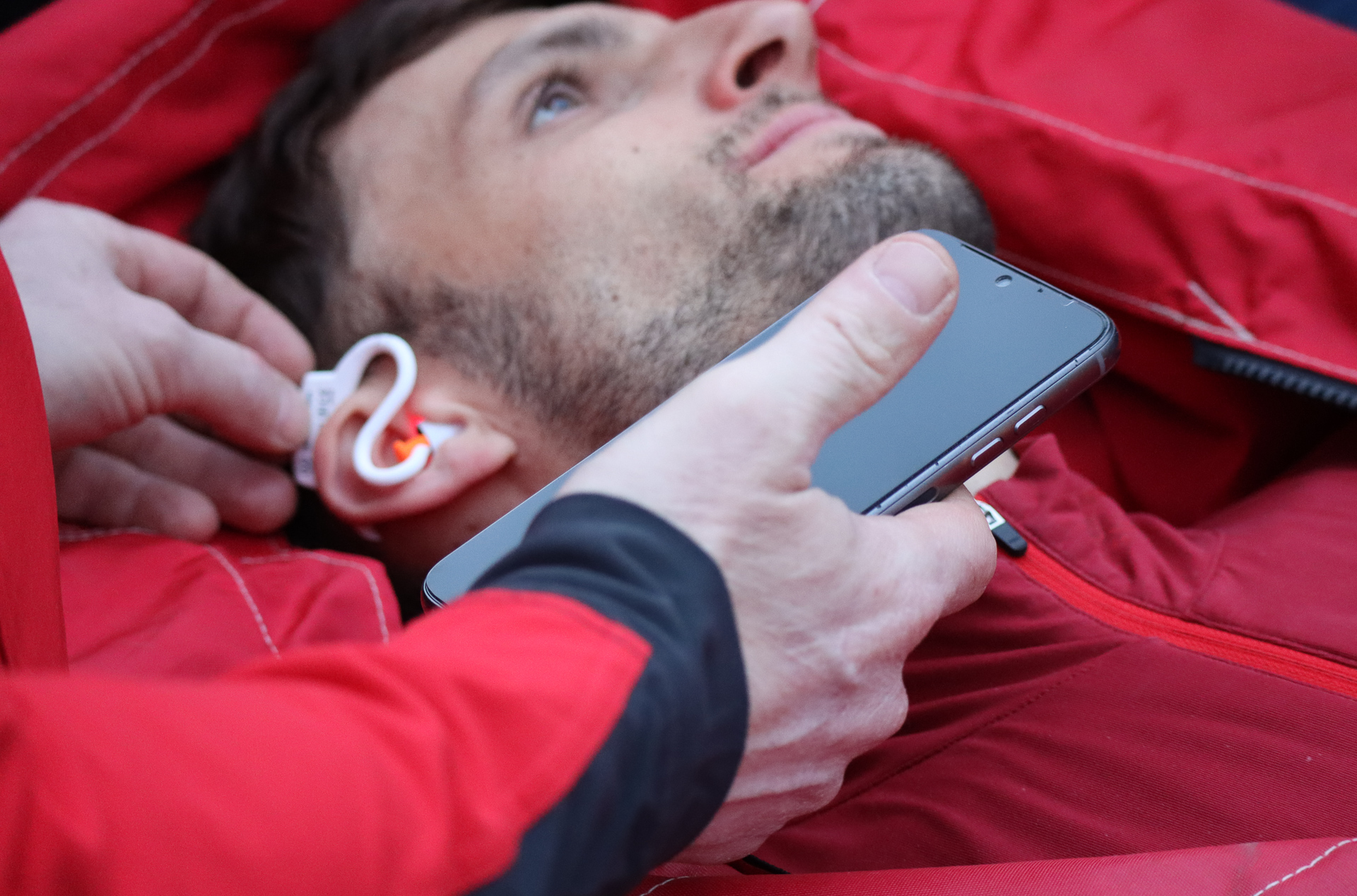
Maintaining your patients’ body temperature is often very important. Does this also apply to hyperthermia patients?
In some cases, accurately measuring body temperature in hyperthermia patients is even more important than in hypothermia cases. In my experience, there are recurring cases of hyperthermia patients suffering from severe neurological impairments due to overheating. In such situations, effective cooling management is essential – and the ability to monitor temperature trends is extremely useful.
For example, consider a patient with a body temperature of 40°C, severe neurological deficits, and hemodynamic instability. Being able to cool the patient in a targeted and controlled manner and then seeing that they regain consciousness at 39°C is of enormous therapeutic significance. Such tools can make a crucial difference. Without temperature monitoring, it is often difficult to determine whether a neurological change is due to temperature-related causes.
How significant are new technologies, such as the c-med° alpha, for your work?
The c-med° alpha is a real game changer in mountain rescue—for many reasons: It is lightweight, wireless, covers a broad temperature range, and has a long battery life. These are all huge advantages in alpine missions.
There is also a growing public expectation that the level of emergency medicine available in urban settings should also be available in the mountains. Just a few years ago, this was hardly achievable, but today, things have changed. Many technologies are now smaller, more portable, and more durable. Examples include mobile ultrasound devices or video laryngoscopy in air rescue, which I am also involved in. These innovations are increasingly making their way into mountain rescue. However, all these technologies must meet one crucial criterion: absolute reliability.
Since when have you been using the c-med° alpha in mountain rescue?
We have been using the c-med° alpha regularly since this winter season. It was introduced last spring in the Upper Austrian, Lower Austrian, and Carinthian mountain rescue services. Currently, we have 15 dual sensor sets in use in our federal state. The user base is continuously growing, and we are now completing our first full year with the device in practice.
With new medical devices, there is often an initial reluctance within teams. It takes persuasion and training to increase acceptance. However, the introduction of the c-med° alpha went surprisingly smoothly. With other new technologies, we have often encountered hesitation among rescuers—despite intensive training. But with the c-med° alpha, it was different—the acceptance was significantly higher right from the start.
In which phases of a rescue operation do you see the greatest benefit of our mobile patient monitor?
For mountain rescue operations, the main benefits are during long terrestrial transports and in acute emergencies on-site. A patient with severe injuries or an unexpected illness may need to be transported for a long time while being monitored—for example, during pain management or temperature monitoring to check if the patient is cooling down during transport.
In acute emergencies, such as resuscitation situations or severe injuries after a fall, a monitor is also essential. However, one thing that the c-med° alpha is still missing is a hemodynamic monitoring function or blood pressure measurement, which is crucial in such situations.
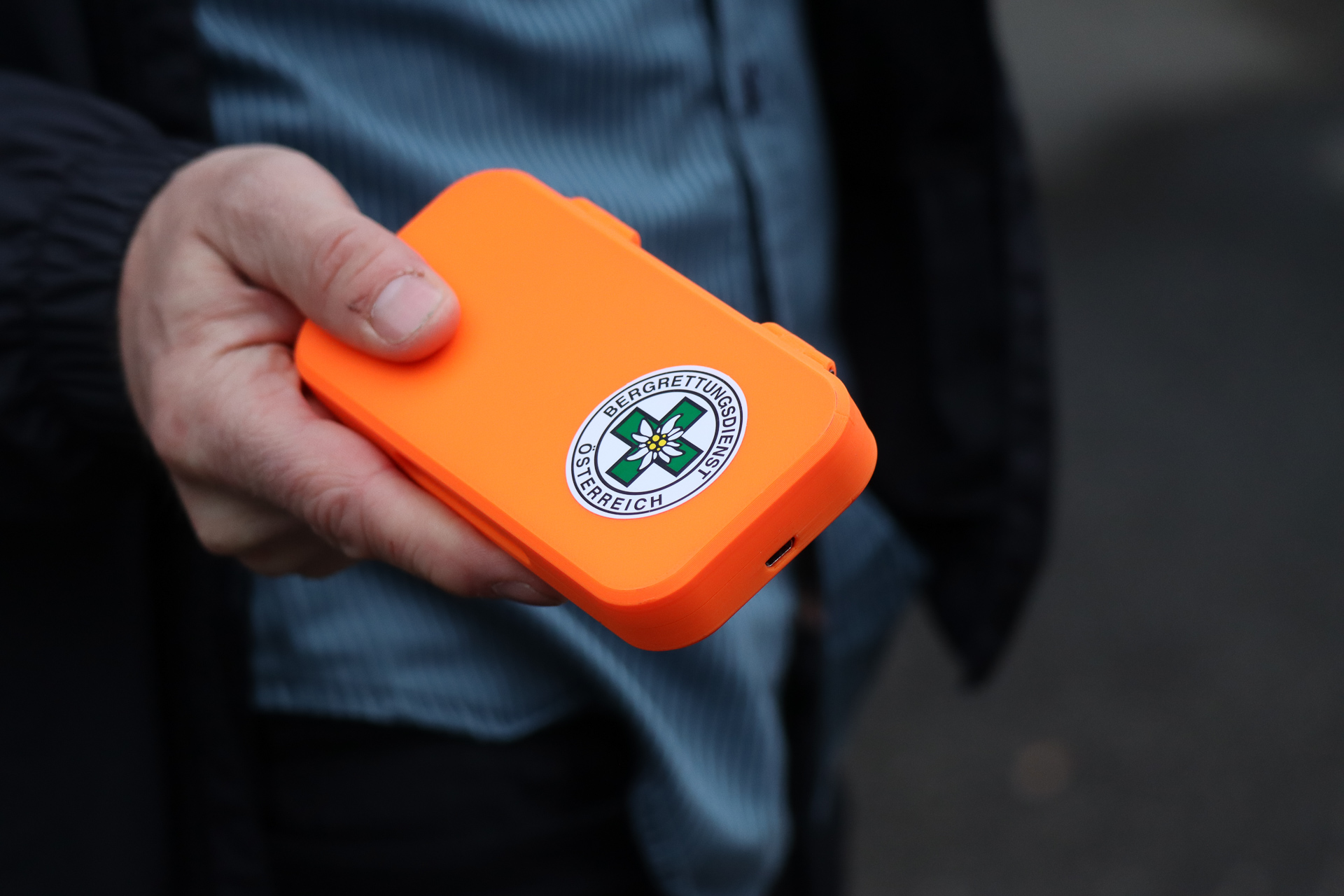
How is documentation handled during a rescue operation?
We have a dedicated documentation form that is used throughout Austria and will be integrated into a mountain rescue app in the future. In the cosinuss° app, it would be helpful to have the option to set time markers so that corresponding actions can be extracted from the protocol. Other than that, I don’t need much more.
Have there been specific rescue missions where the c-med° alpha was particularly helpful?
Yes, several. Even in cases of determining death, when there was nothing else available, and we needed to document the absence of vital signs.
Primarily, however, the c-med° alpha is used in standard operations for pain therapy, helping to monitor trends—such as a rising heart rate or decreasing oxygen saturation, which could indicate an emerging problem.
A particularly valuable feature is the ability to monitor the patient remotely, for example, during an Akja transport (rescue sled). In such cases, you can keep an eye on the patient’s vital signs from ten meters away, or carry the monitor in your pocket while it beeps like in an operating room. This allows you to simply listen to the sound instead of constantly having to check the monitor attached to the patient. It has a certain elegance.
What aspects of the technology have been most useful to you, and where do you see room for improvement?
A key improvement would be the ability to monitor multiple patients simultaneously in the app, particularly during mass casualty incidents. Telemedical monitoring would also be beneficial, allowing remote patient monitoring when I’m not on-site. Another useful feature would be the ability to locate multiple monitored individuals, such as during ski patrol operations.
How can cosinuss° help make mountain rescue work safer and more effective?
I already find the technology very suitable for laypersons. Even mountain rescuers without a medical background use the c-med° alpha. Overall, I am very satisfied and look forward to future developments and enhancements of the system.
